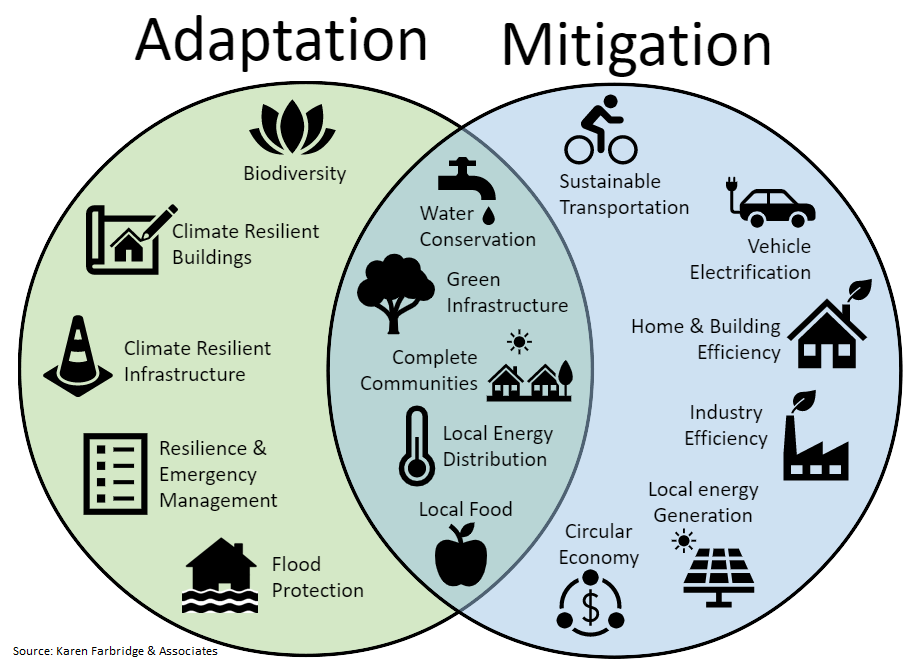Based on discussions at the 2022 Climate Change Summit, and survey results submitted by Niagara Climate Change Action Network member organizations, the Network’s initial priority focus, in terms of climate change action, will be on:
- A pathway to net zero;
- Biodiversity; and
- Climate resilient infrastructure.
As progress is made in these areas, the focus may need to be updated to remain relevant. Learn more about these focus areas by scrolling down.
Climate change action includes two main categories: mitigation and adaptation. Mitigation reduces greenhouse gas emissions to limit climate change, while adaptation adjusts to climate change impacts and attempts to reduce vulnerability.

Pathway to Net-Zero
Net-zero is defined as emitting little to no greenhouse gas emissions and offsetting all remaining emissions through removal or permanent storage. Achieving net-zero emissions has been identified as a necessary step forward in the fight against climate change.
The Niagara Climate Change Action Network is committed to preparing Niagara for a transition to net-zero emissions by encouraging growth in clean energy and technology, collaborating with and supporting organizations who take action, and through comprehensive energy planning.
Biodiversity
The ecoregion that encompasses the Niagara Peninsula watershed is among the most biodiverse in southern Ontario; its unique natural features are home to tens of thousands of plant and animal species. The beautiful landscapes of Niagara hold ecological, economic, and cultural significance to residents and visitors alike, and therefore protecting and improving local biodiversity has been identified as one of the Niagara Climate Change Action Network’s leading priorities.
The Niagara Climate Change Action Network encourages and supports increasing biodiversity through conservation area management, land securement, ecosystem restoration, and environmental stewardship.
Climate Resilient Infrastructure
Niagara is expected to experience an increase in frequency and severity of extreme weather events, which threatens pre-existing infrastructure including transportation, roads and buildings.
Advancing climate resiliency through infrastructure reduces community vulnerabilities, lessens climate related costs and damages, and positions Niagara favourably moving forward in the face of climate change impacts. The right investments today will reduce costs in the future.